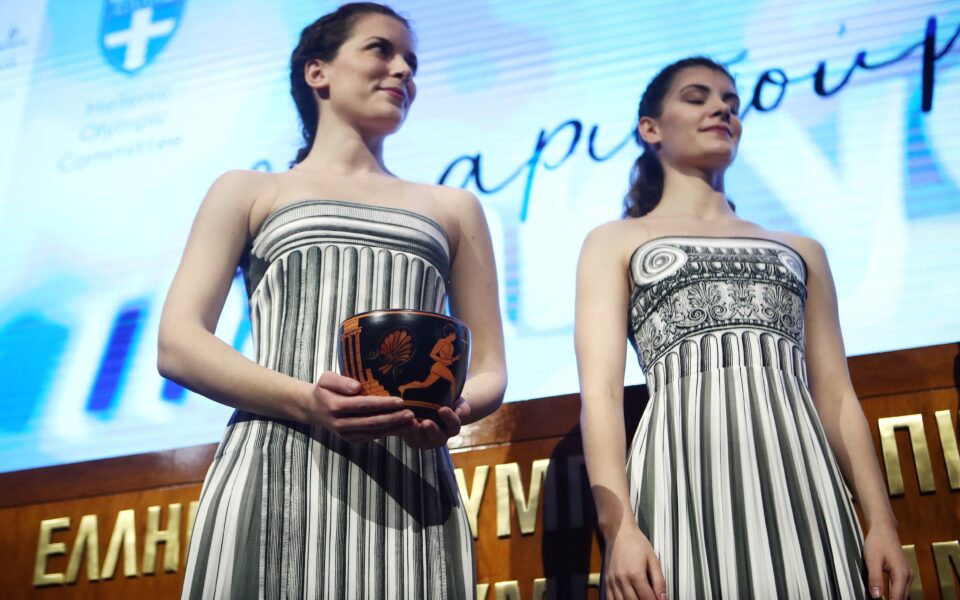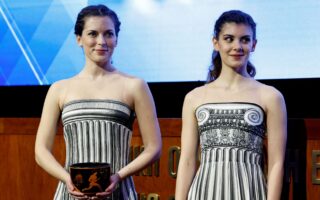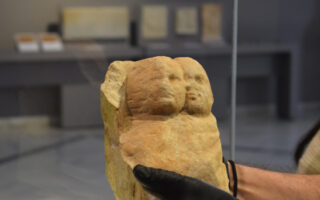Olympic Torch costumes split public opinion

What are the adjectives that should describe every new creative interpretation of ancient Greek culture? Must it be “simple yet elegant,” “abstract” or “figurative”? Can it be “fresh”? Can it be “contemporary”?
And what are the appropriate adjectives for an esthetic proposal that is based on a completely different creative approach?
The debate – mainly on social media, as is usually the case – has been heated these days following the unveiling of the new costumes for the Olympic Torch lighting and handover ceremony ahead of the Paris Games, designed by internationally acclaimed Greek designer Mary Katrantzou. The unveiling took place on March 12 at the Athens headquarters of the Hellenic Olympic Committee, sparking a wave of mostly negative comments on the web.
It is clear from the photographs of the costumes that Katrantzou – like her predecessors who designed for the same project – drew inspiration from the ancient Greek world. Going one step further than previous collections for the Olympic Torch lighting ceremonies though, she tapped into ancient architectural and decorative motifs. It is an approach that is, after all, deeply rooted in her creative process, and anyone who has been following her work and her career trajectory on the global fashion stage knows that the Greek designer has developed a very strong and particular idiom.
A child of the digital age and technology, as she describes herself, she designs collections that are instantly recognizable and have a visual impact – quite the opposite of patent minimalism.
Ever since presenting her first collection in London in 2009 – a small collection of colorful dresses with digital prints of oversized jewelry motifs – it was clear that Katrantzou would be breaking the rules, while the soon-earned moniker of “queen of prints” came as a recognition of her talent, but also of the new era. Katrantzou has also designed costumes for dance productions like Russell Maliphant’s “The Thread,” which was set to music by Vangelis, as well as for the New York City Ballet.
She has tapped into Greek culture in other collections too, such as motifs inspired by the elegant Minoan women depicted on the frescoes of Crete, or others taken from the drachma. Every time, the trompe l’oeil technique is one of the key features.
Let us also note that there’s a second creative Greek note at the Paris Olympics, as one side of the medals has been designed by Elena Votsi. The Greek jewelry maker designed the medals for the 2004 Athens Games and, ever since, one side has continued to depict a statue of Nike, the Greek goddess of victory, with the Parthenon and the Panathenaic Stadium in the background.
A designer’s work is judged in the field and while, yes, the presentation of Katrantzou’s costumes in Athens last week was admittedly unfortunate, it would be good to hold back criticism until we see them in situ, at Ancient Olympia.





